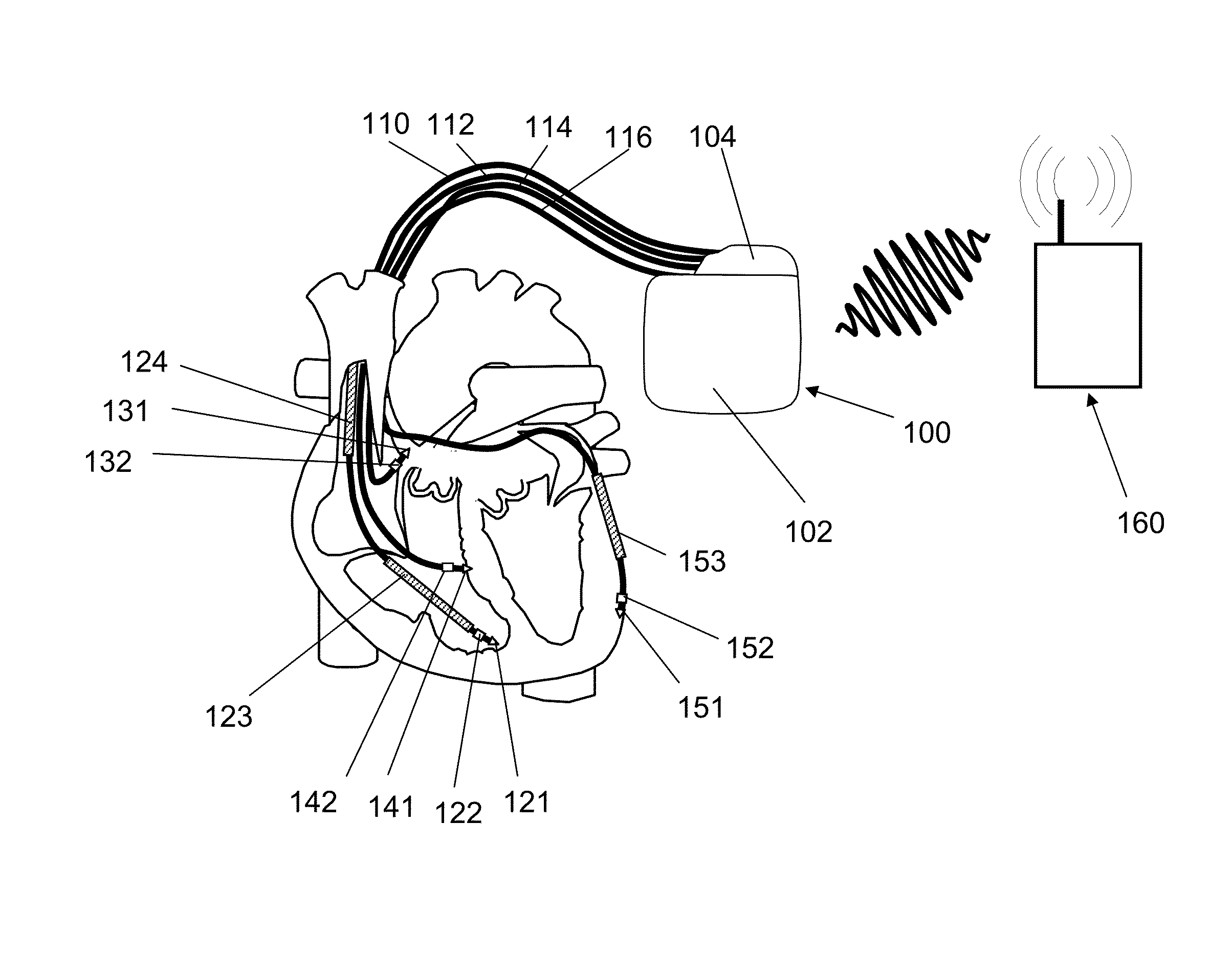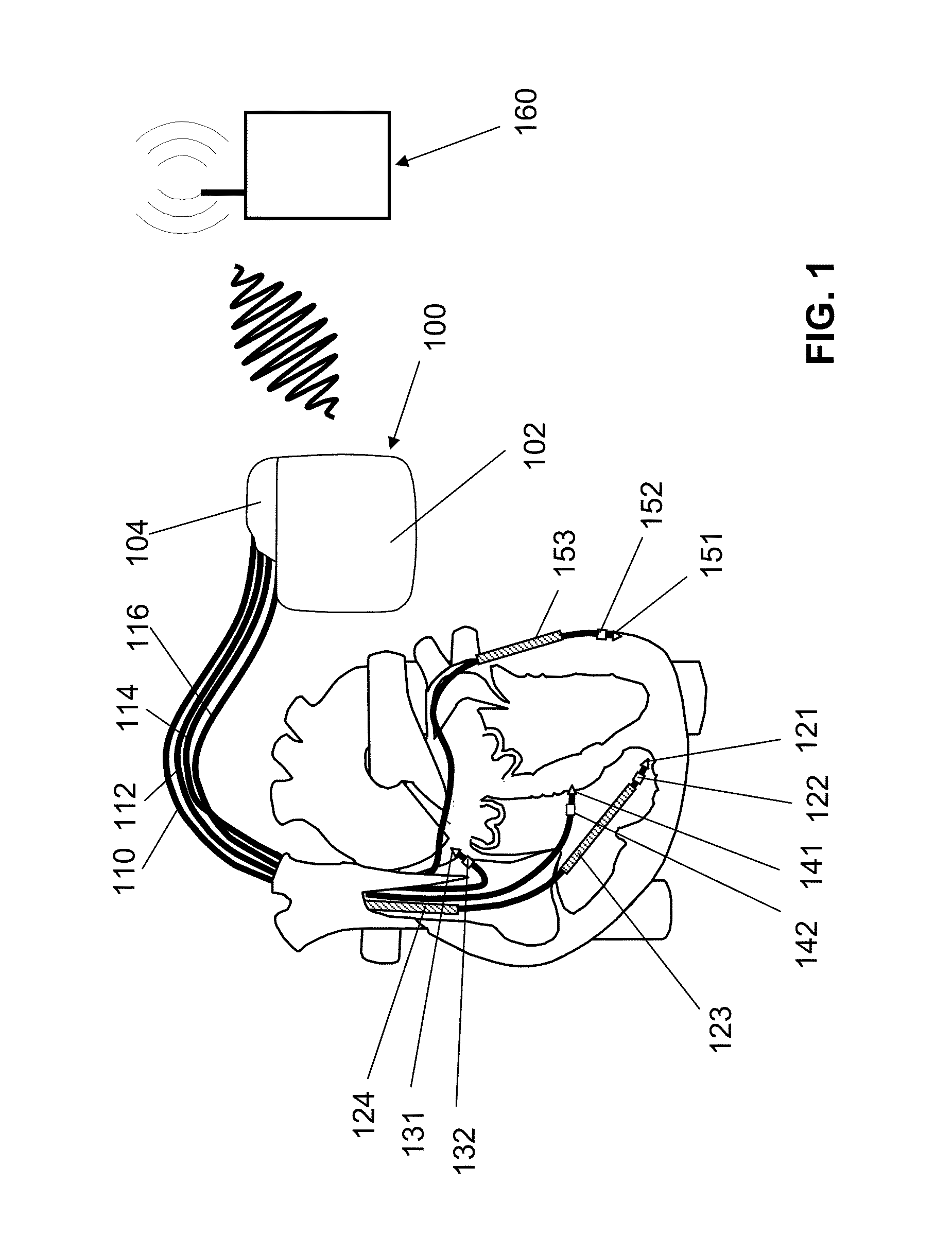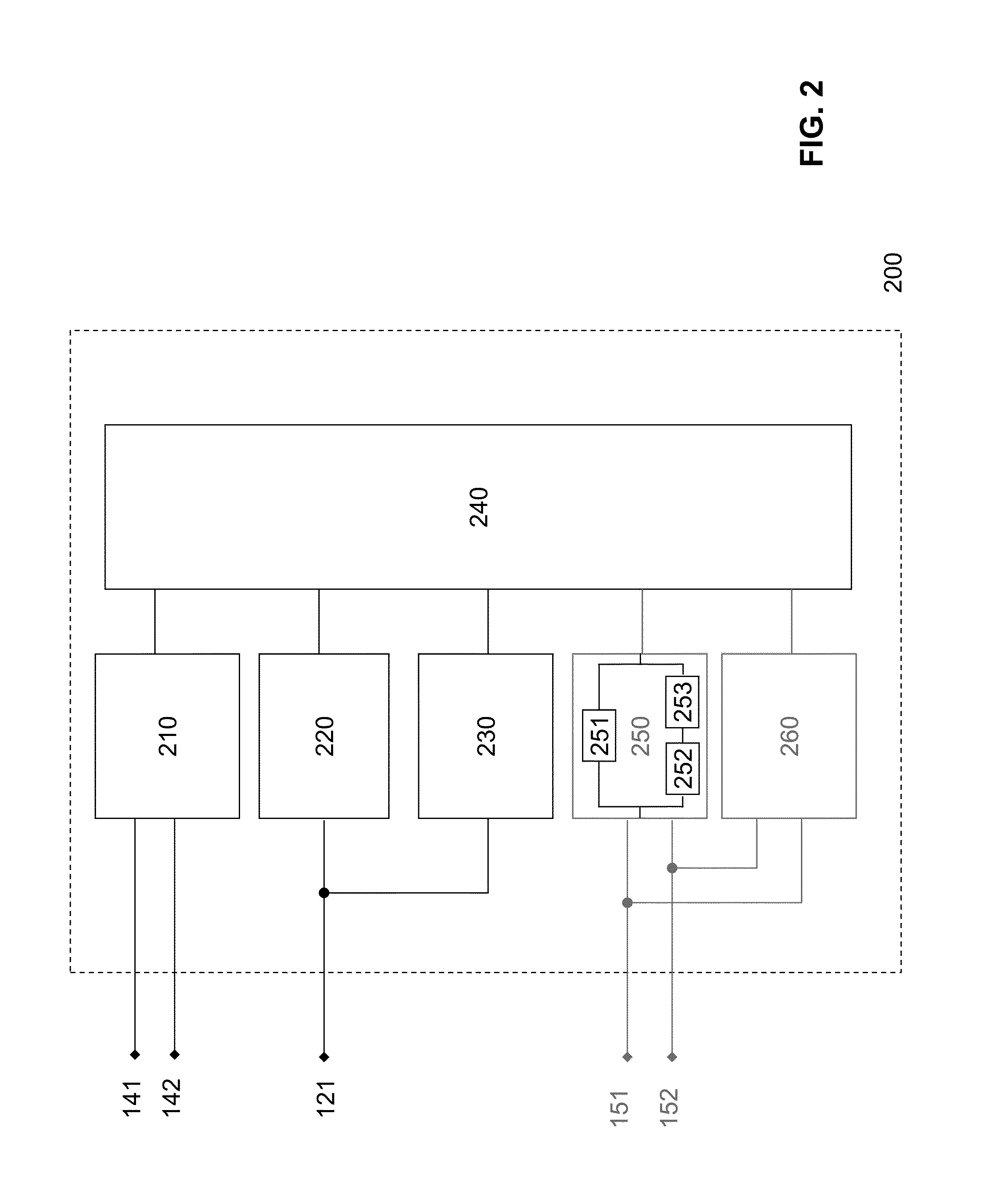Cardiac stimulator for delivery of cardiac contractility modulation therapy
a cardiac contractility and stimulator technology, applied in electrotherapy, physical therapy, artificial respiration, etc., can solve the problems of low ejection fraction, low quality of life and high mortality, and sensors placing complex demands on electrodes and sensor design, so as to reduce current consumption and possible negative effects, increase contractility, and high energy consumption
- Summary
- Abstract
- Description
- Claims
- Application Information
AI Technical Summary
Benefits of technology
Problems solved by technology
Method used
Image
Examples
Embodiment Construction
[0067]FIG. 1 shows, as an example of implementation, a three-chamber ICD system having a switchable CRT-CCM function. The cardiac stimulator (pulse generator or a simple generator) 100 is connected to a plurality of implantable electrode leads 110, 112, 114 and 116. Generator 100 comprises a housing 102 which, in this example, is composed of metal and is therefore electrically conductive, and is hermetically sealed housing 102 contains electronic and electrical components of generator 100, such as a battery, control electronics, stimulation pulse generators, sensing units comprising appropriate amplification and filter electronics. The components are detachably connected to electrode leads 110, 112, 114 and 116 via electrical plug connectors in a connector housing 104 (which is also referred to as a header).
[0068]For purposes of right-ventricular sensing and stimulation, right-ventricular electrode lead 110 comprises a right-ventricular tip electrode 121 and a right-ventricular ring...
PUM
 Login to View More
Login to View More Abstract
Description
Claims
Application Information
 Login to View More
Login to View More - R&D
- Intellectual Property
- Life Sciences
- Materials
- Tech Scout
- Unparalleled Data Quality
- Higher Quality Content
- 60% Fewer Hallucinations
Browse by: Latest US Patents, China's latest patents, Technical Efficacy Thesaurus, Application Domain, Technology Topic, Popular Technical Reports.
© 2025 PatSnap. All rights reserved.Legal|Privacy policy|Modern Slavery Act Transparency Statement|Sitemap|About US| Contact US: help@patsnap.com



